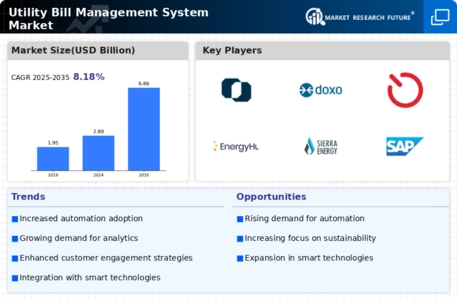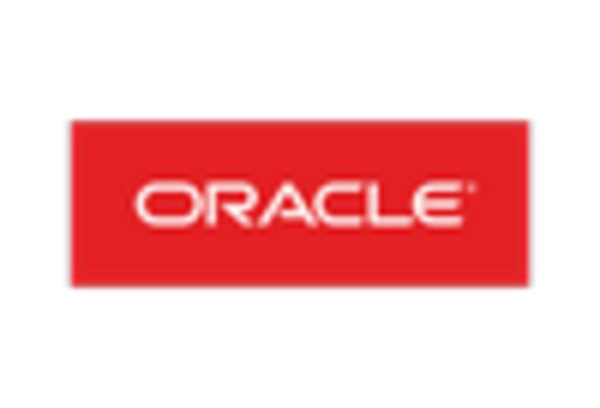Growing Adoption of Smart Meters
The proliferation of smart meters is significantly influencing the Utility Bill Management System Market. Smart meters provide real-time data on energy consumption, enabling consumers to monitor their usage patterns closely. This technology not only empowers users to make informed decisions regarding their energy consumption but also aids utility companies in optimizing their operations. According to recent data, the installation of smart meters has increased by over 30% in several regions, indicating a strong market trend. This shift is likely to drive the Utility Bill Management System Market forward, as more consumers and businesses embrace smart technologies.
Rising Demand for Energy Efficiency
The Utility Bill Management System Market is experiencing a notable surge in demand for energy efficiency solutions. As consumers become increasingly aware of their energy consumption patterns, there is a growing inclination towards systems that provide detailed insights into usage. This trend is further supported by government initiatives aimed at promoting energy conservation. For instance, various regions have implemented regulations that encourage the adoption of energy-efficient technologies. Consequently, the Utility Bill Management System Market is likely to witness a robust growth trajectory, as businesses and households seek to optimize their energy usage and reduce costs.
Increased Focus on Customer Engagement
The Utility Bill Management System Market is witnessing a heightened focus on customer engagement strategies. Utility providers are recognizing the importance of fostering strong relationships with their customers to enhance satisfaction and loyalty. This shift is leading to the development of user-friendly platforms that facilitate easy access to billing information and personalized services. Furthermore, the integration of mobile applications is enabling consumers to manage their utility accounts conveniently. As customer expectations evolve, the Utility Bill Management System Market is likely to adapt, prioritizing engagement and service quality to meet the demands of a more informed consumer base.
Regulatory Support for Sustainable Practices
Regulatory frameworks promoting sustainable practices are becoming increasingly prevalent, thereby impacting the Utility Bill Management System Market. Governments worldwide are enacting policies that encourage the adoption of renewable energy sources and energy-efficient technologies. These regulations often include incentives for consumers and businesses to invest in utility bill management systems that align with sustainability goals. As a result, the Utility Bill Management System Market is expected to benefit from this supportive regulatory environment, fostering innovation and driving market growth as stakeholders seek compliance and sustainability.
Technological Advancements in Billing Systems
Technological advancements are playing a pivotal role in shaping the Utility Bill Management System Market. The integration of artificial intelligence and machine learning into billing systems has enhanced accuracy and efficiency. These technologies enable predictive analytics, allowing utility providers to forecast demand and manage resources more effectively. Moreover, the adoption of cloud-based solutions is facilitating real-time data access and improved customer service. As a result, the Utility Bill Management System Market is poised for expansion, with stakeholders increasingly investing in innovative solutions to streamline operations and enhance user experience.


















Leave a Comment